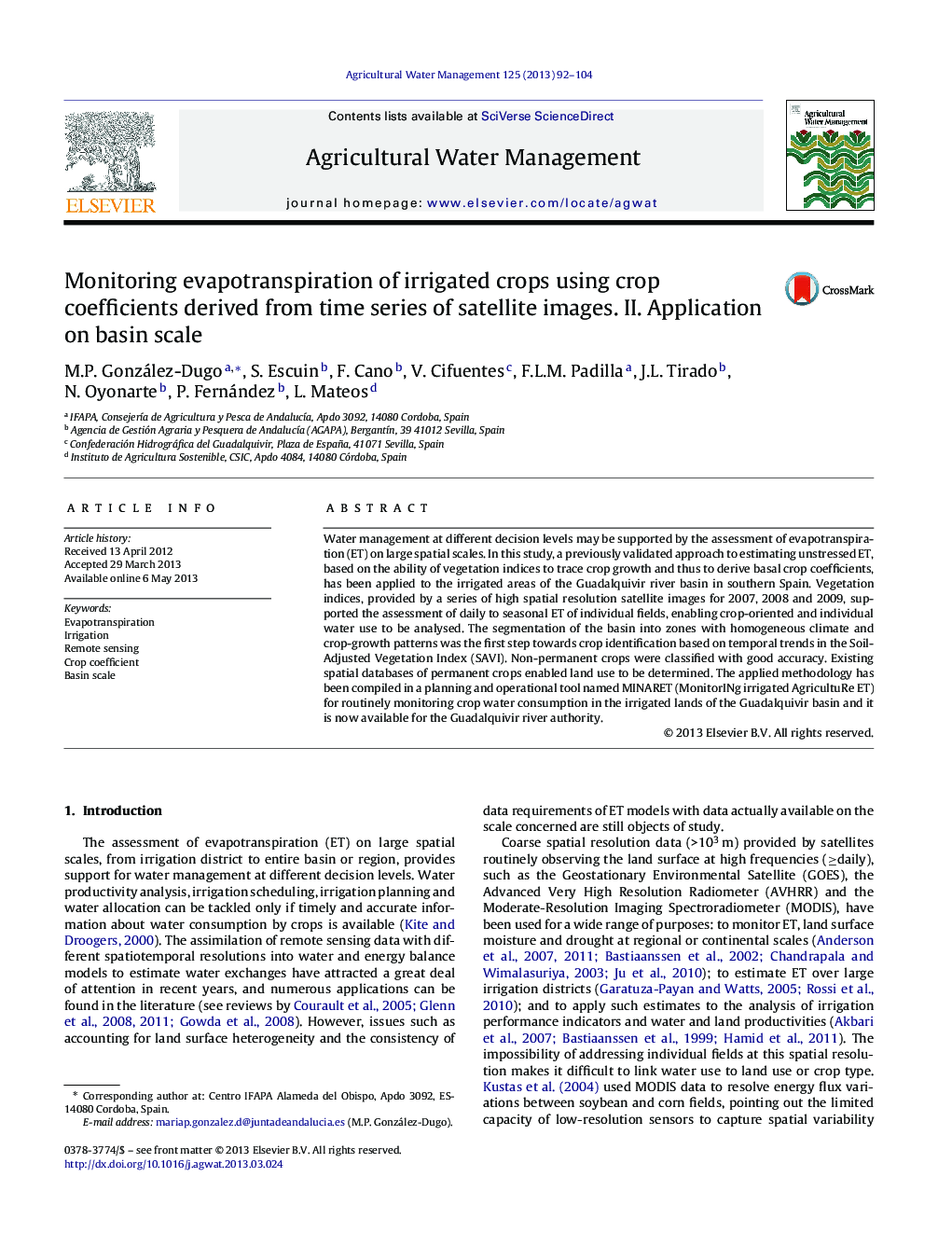| Article ID | Journal | Published Year | Pages | File Type |
|---|---|---|---|---|
| 4478870 | Agricultural Water Management | 2013 | 13 Pages |
•A planning and operational tool for monitoring ET in irrigated lands is presented.•MINARET uses vegetation indices to derive basal crop coefficients.•Spatial resolution of images permitted individual characterisation of the fields.•The basin was segmented in zones with homogeneous climate and crop-growth patterns.•Permanent crops databases and image classification are combined to map crop types.
Water management at different decision levels may be supported by the assessment of evapotranspiration (ET) on large spatial scales. In this study, a previously validated approach to estimating unstressed ET, based on the ability of vegetation indices to trace crop growth and thus to derive basal crop coefficients, has been applied to the irrigated areas of the Guadalquivir river basin in southern Spain. Vegetation indices, provided by a series of high spatial resolution satellite images for 2007, 2008 and 2009, supported the assessment of daily to seasonal ET of individual fields, enabling crop-oriented and individual water use to be analysed. The segmentation of the basin into zones with homogeneous climate and crop-growth patterns was the first step towards crop identification based on temporal trends in the Soil-Adjusted Vegetation Index (SAVI). Non-permanent crops were classified with good accuracy. Existing spatial databases of permanent crops enabled land use to be determined. The applied methodology has been compiled in a planning and operational tool named MINARET (MonitorINg irrigated AgricultuRe ET) for routinely monitoring crop water consumption in the irrigated lands of the Guadalquivir basin and it is now available for the Guadalquivir river authority.
